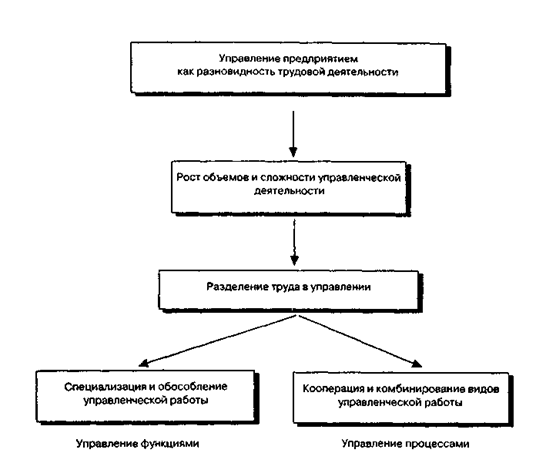home
 Management Management
 Management - Vikhansky OS Management - Vikhansky OS
|
Management - Vikhansky OS
Chapter 6 DESIGN OF WORK
It is necessary to perfection,
training was harder to
the case itself.
Bacon
This chapter is supposed to answer the questions regarding what action, how and who in the organization has to perform, the organization was able to achieve its objectives and implement the chosen strategy? Suppose you are with your friends, experts have created a company to develop software for the unique production processes. From the outset, the operation of your company, there are two problems. First - what action should perform each of your employees, so was born the necessary consumer computer program. Second - what actions should fulfill the company as a whole to achieve their organizational goals. And then, and more often called functions. In the first case - a function of the employee and in the second - a function of the organization. In modern management lexicon, the term "function" refers to a specific action performed by a person or organization in the framework of the division of labor in society. This chapter discusses those and other functions. At the same time functions of the organization are considered to work functions, as they are more general in nature.
1. Organization Management Functions
1.1. General functions of the enterprise
When we say that an organization or a company function, we mean that in the framework of their people carry out certain actions, aimed at both the interaction with the environment, and on an in-house communication. The first type of interaction - a role functioning enterprise. Here, the function acts as its social interpretation and is part of the overall role played by the company in any system of society, ie, higher system level organization.
For the first time the enterprise features have been identified and described by French scientist and practitioner A. Fayolle in his work "General and industrial management" in 1916. The increasing complexity of the interaction with the external environment allows today to mention the more general functions of the modern enterprise (tab. 6.1).
Table 6.1.
The functions of the modern enterprise
The main resource is |
Company function |
Time |
Planning |
Consumer |
Marketing |
Business |
business |
Money |
Finance |
People |
Organization |
Technologies |
Production |
ideas |
Innovation |
Data |
Information |
culture |
Social development |
Each of these general functions is a certain type of work on business management as a whole. It is relatively independent areas of work, highlighting in the process of division of labor in the management of wearing the objective (Fig. 6.1).

Fig. 6.1. the division of labor in the management of: vertical and horizontal growth of the organization
The division of labor in management, specialization and combining different management jobs - an ongoing process. There are six stages of this process, the corresponding volume and complexity of management of the organization or enterprise as a whole.
The first stage. The volume control is small, low complexity of administrative actions, manages the same employee who performs production functions (the foreman, the head of the family business).
The second stage. The amount of administrative work requires the allocation of a special employee, exempt from production functions (section chief, the master, the head of a small business).
The third stage.
The amount of work to manage increases so that there is a need to coordinate the activities of these special workers, there is a linear hierarchy (of a group of artists appears foreman).
The fourth stage.
Further growth in the volume and complexity of the administrative work requires expertise in the management of employees performing certain functions in the management of experts appear: planners, accounting clerk, overseers.
The fifth stage. The amount of work on the general features and the number of workers with special work increases and requires the coordination of efforts. There is a necessity in chief for experts (chief accountant).
The sixth stage. The development of administrative activity leads to the need to unite functional and linear hierarchies under the overall guidance. Management becomes a specialized activity (company director).
All these stages exist simultaneously and have a well-defined organizational form in a variety of positions and stukturnyh units.


Comments
Commenting, keep in mind that the content and the tone of your messages can hurt the feelings of real people, show respect and tolerance to his interlocutors, even if you do not share their opinion, your behavior in terms of freedom of speech and anonymity offered by the Internet, is changing not only virtual, but real world. All comments are hidden from the index, spam control.